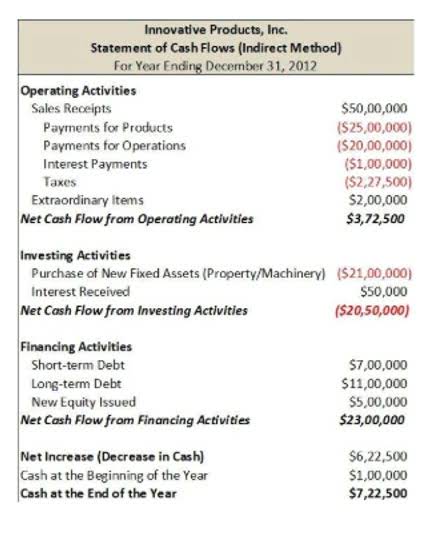
Remember, while retainage is a standard practice in construction, how you handle it can make a significant difference in your overall financial health. Retainage can have a substantial effect on your cash flow because the amount, generally 10% is approximately the same as the net profit that most contractors can expect to make on any given project. Considering that your profitability likely is funding future projects, it doesn’t take long for https://www.bookstime.com/ this to get out of hand. That’s why it’s critical, to save up cash reserves early in the construction industry. For most construction businesses, especially those working on long-term contracts, the percentage of completion method is generally the most suitable option.

Prevailing Wage
Construction accounting services offer expertise in understanding and complying with tax regulations. They ensure that construction companies fulfill their tax obligations accurately and on time, minimizing the risk of penalties and legal issues. This blog will introduce the concept of construction accounting services, which is the key player in keeping financial accuracy and compliance in a multi-project environment. Now, first, let’s start the discussion with the importance of construction company accounting.
Fluctuating Overhead Costs

Cost-plus is one of the most common construction contracts, particularly for larger projects. The IRS states that the Completed Contract Method is permissible for home construction and small construction contracts only. Small contracts refer to those completed within two years after the start or with a limited average annual gross revenue. So, construction accounting uses two main types of Revenue Recognition approaches – Percentage of Completion (POC) and Completed Contract. Many construction contract terms allow for 30, 60, or even 90-day invoice payments. Where tracking results on a single project is tricky, what’s even more challenging is tracking results across multiple jobs running simultaneously.

Maintaining Financial Ledgers and Balance Sheets
- Job costing enables organizations to accurately assign each expense, whether it is labor or material, to be utilized for particular jobs.
- Second, the prevailing wage rate will vary not just by area but also specific worker classification.
- Job costing helps construction business owners stay on top of the numerous variables of running a project-centered, decentralized business and gives you insight into the company’s financial performance.
- These situations can make it difficult to decide when revenues should be recognized.
- The process includes recording all the money coming in and going out of the project.
CCM sometimes allows contractors to defer taxable revenue if the project completion happens in the following income statement tax year. Unlike many industries like manufacturing, where businesses have a consistent stream of revenue from product sales, the construction industry depends on projects. This means it’s impossible in construction to predict how much revenue will be coming in month-to-month or even year-to-year. Everything depends on when the company will have new projects and the size of those projects. So, the impact of inaccuracies and imprecision is greater in construction accounting.

Tax Refund Schedule – What Every Taxpayer Should Know
- In that case, they may decide simply to use another method for their own books as well.
- This is a way of preventing productivity loss due to the movement of resources and personnel.
- With unit price billing, you charge your clients based on completed units of work, such as per square foot of flooring installed or per cubic yard of concrete poured.
- PCM is suitable for long-term projects, while CCM is used for home construction or tax-deferral strategies.
- By consistently updating and reviewing these sheets, organizations can track budgets in real time, adjust resource allocation as needed, and forecast final project costs with improved accuracy.
- It allows construction firms to assess the financial implications of completing certain projects and plan their completion while meeting contractual parameters.
Even smaller projects can often stretch out due to problems like bad weather, labor shortages, or raw materials. To ensure adequate income and cash flow, contractors usually manage a schedule of multiple payments that are based on work completed to date. It ensures that workers are paid accurately and on time because it is vital for an industry where labor costs are a substantial part of project expenses. Accounting services handle payroll efficiently, which includes calculating wages, managing deductions, and staying compliant with labor laws. The flow of money in construction companies is tremendously fast and involves a lot of money, not to mention projects are involve hundreds of types of costs.
- A lot of the construction accounting applications out there are powerful, but come with weeks of custom implementation and a hefty price tag.
- Below are the key factors in which construction accounting and bookkeeping differ from other types of accounting.
- This is retainage, and it usually ranges from 5% to 10% (varies from state to state).
- To know which system is right for you, define your requirements, including the size, budget, and goal of your construction biz.
- Now, we will discuss the reasons why construction companies can rely on bookkeeping data entry services.
Tired of Wondering Where the Money’s Going?
- With so many moving parts, it is easy for records to be forgotten, lost, or not entered in the books at the right time.
- Understanding and implementing the right revenue recognition method is essential as it directly impacts your financial statements, tax obligations, and ability to secure future work through bonding.
- These numerous temporary cost centers are ultimately why contractors need to practice accurate job costing.
- Contractors can typically determine their requirements, especially when entering another jurisdiction, by checking with their local union business manager.
- Because customers’ payments arrive at various times, unpredictable cash flows are expected.
Therefore, the allowable wages for workers on federal projects are dynamic and location-specific, based on the prevailing wage determinations published by the government. Retainage is accounting and bookkeeping for construction companies the agreed-on percentage of the project price that is withheld from a contractor for a defined period until the job is completed. The amount that’s held back is typically defined in the contract, usually amounting to 5%-10% of the contract value.






